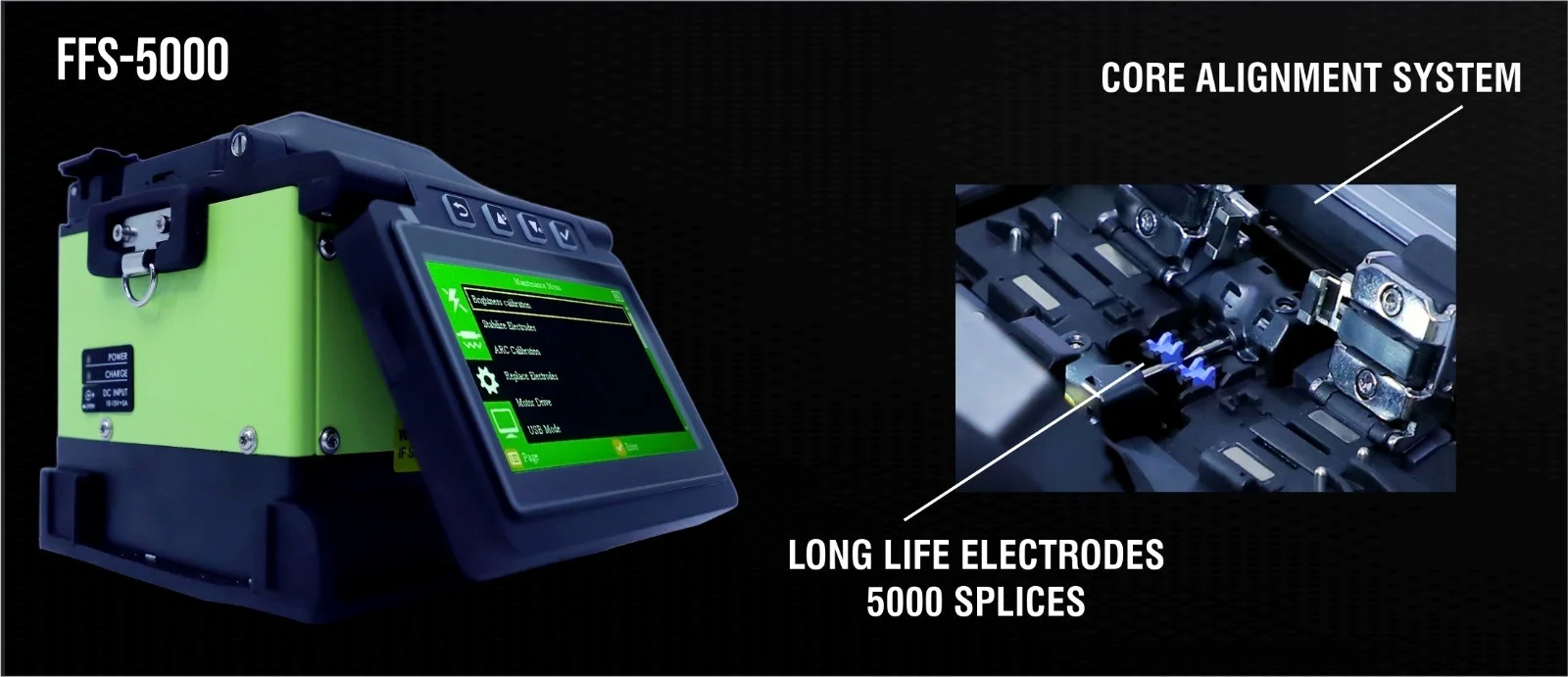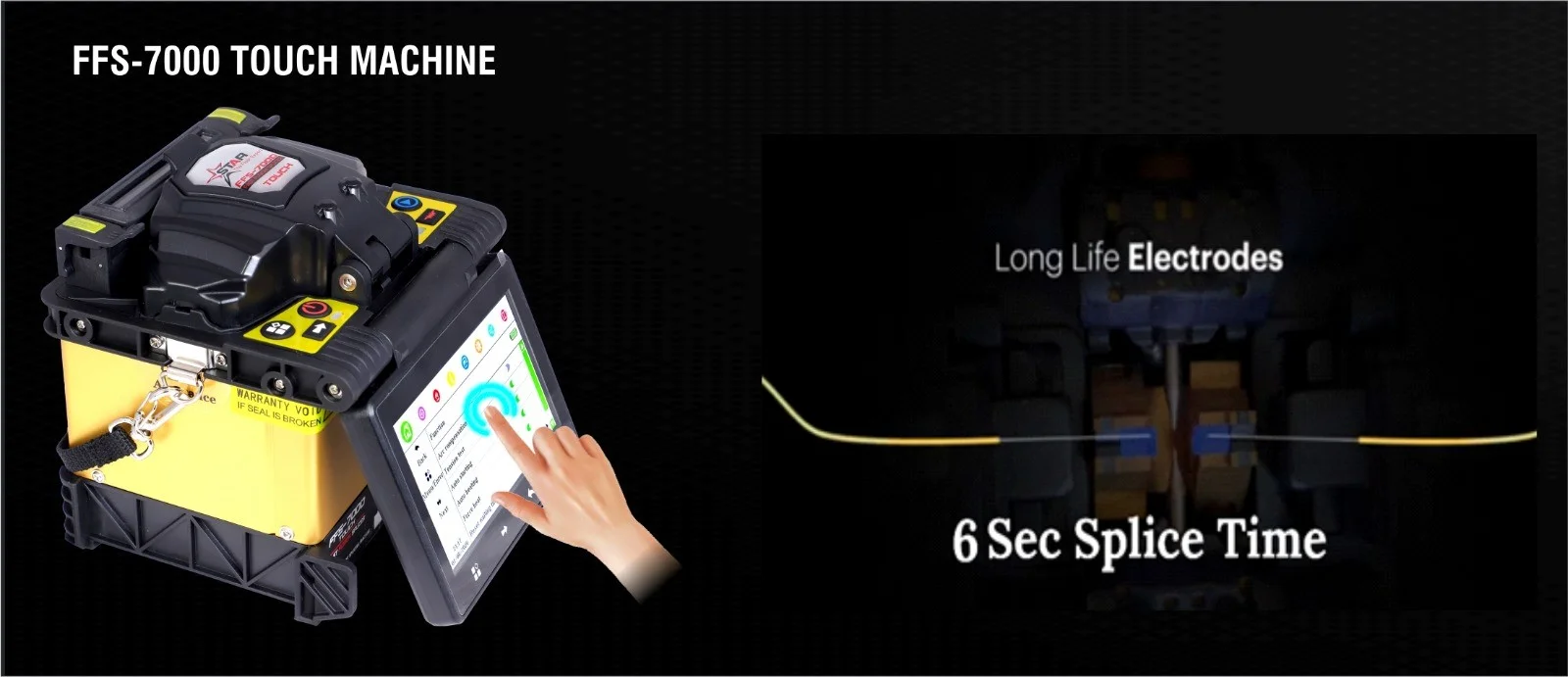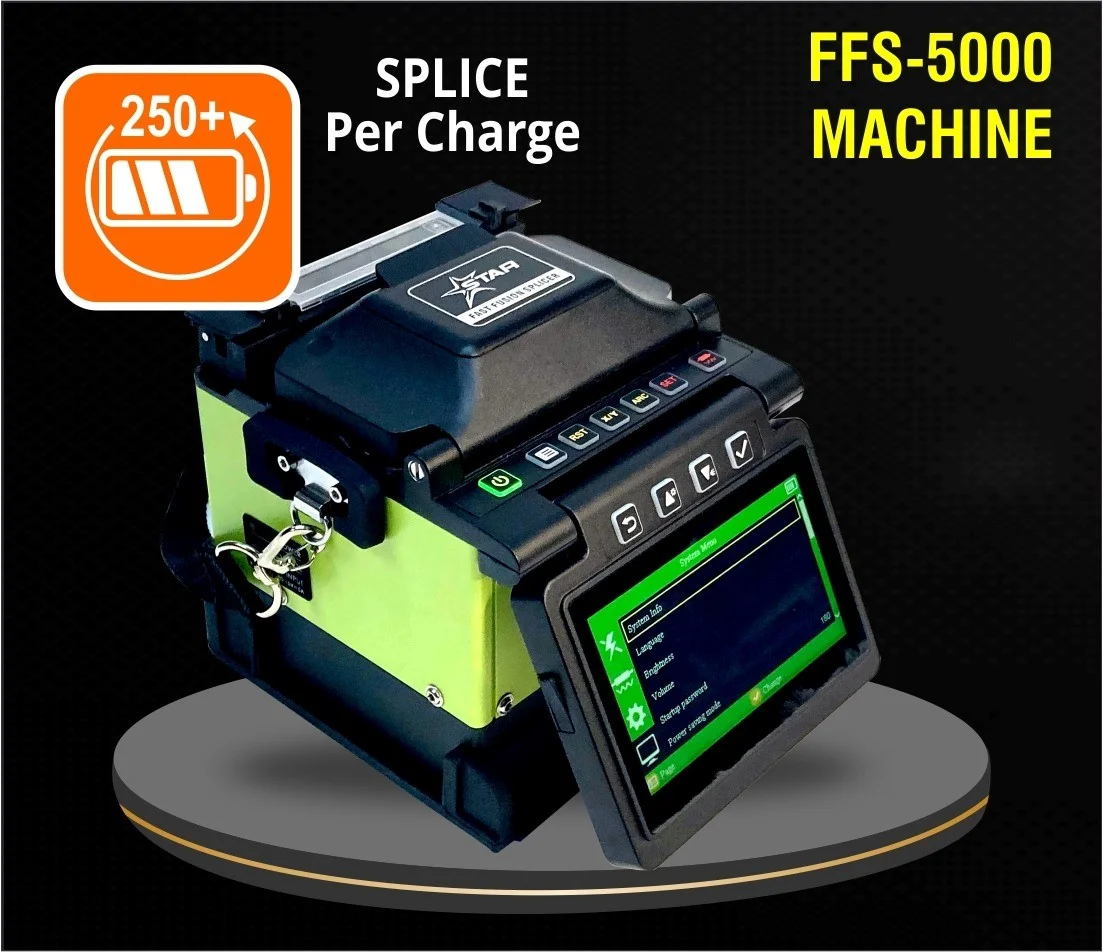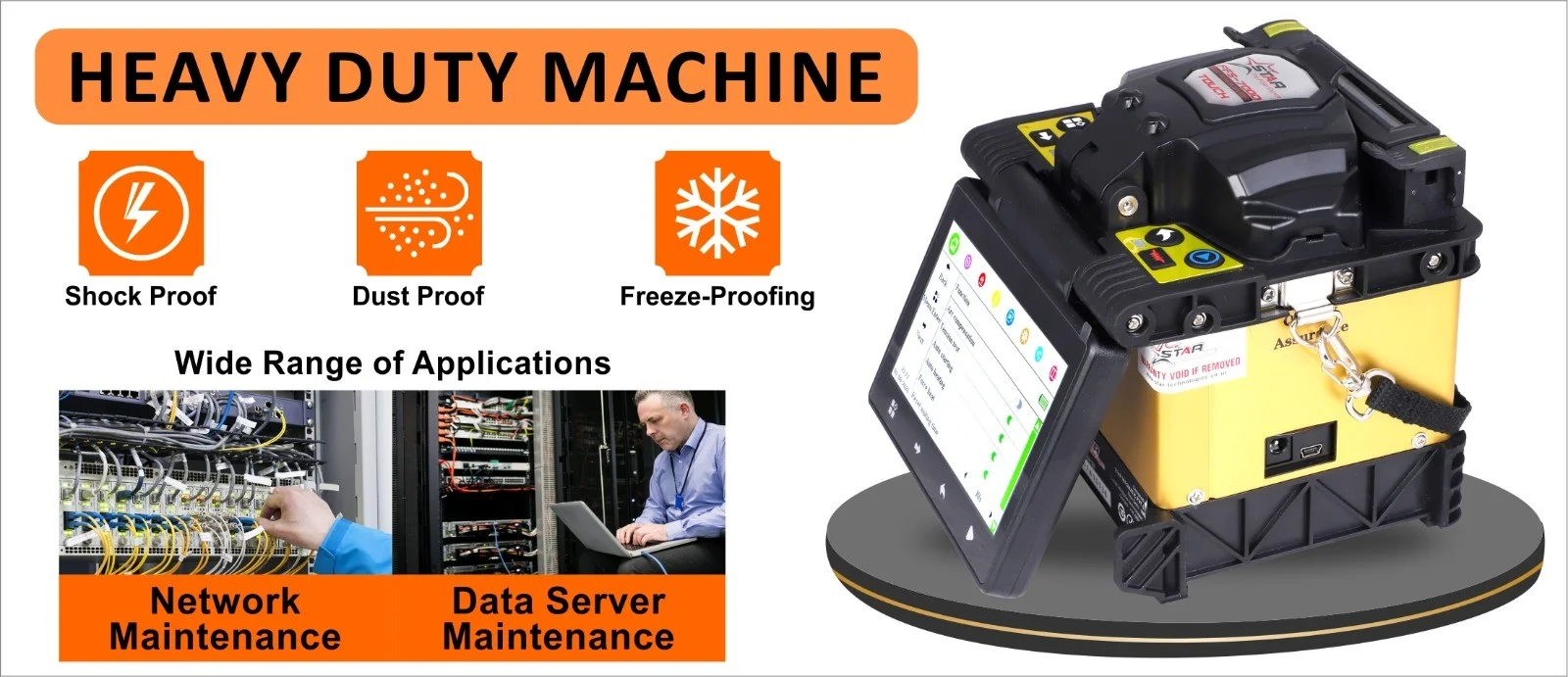Choosing the best fusion splicer is critical for ensuring high-performance fiber optic splicing, network reliability, and long-term durability. The FFS-5000 and FFS-7000 are two advanced fiber splicing machines designed to enhance efficiency and accuracy in FTTH installations, data centers, and large-scale telecommunications projects. But which one is the right fit for your needs?
In this in-depth comparison, we analyze the features, specifications, and performance of both models to help you make an informed decision for your fiber network deployment.

Comparing the FFS-5000 and FFS-7000 Fusion Splicers: Speed, Accuracy, and Durability
1. Splicing Speed & Efficiency
Efficient splicing plays a significant role in fiber optic network deployment, influencing project timelines and overall fiber optic connectivity.
1.1 FFS-5000 Fusion Splicer
- Optimized for single fiber splicing, offering fast and reliable performance suitable for FTTH (Fiber to the Home) installations and enterprise fiber networks.
- Features a user-friendly interface and a streamlined splicing process, enabling technicians to complete tasks quickly, reducing downtime, and improving workflow efficiency.
- Ensures seamless fiber optic cable splicing with minimal interruptions, making it ideal for routine fiber optic installations and maintenance work.

1.2 FFS-7000 Fusion Splicer
- A high-capacity fiber splicing machine with a touchscreen display, designed for large-scale fiber network projects.
- Offers high-precision fiber splicing speed, making it ideal for last-mile connectivity where efficiency is critical in reducing deployment costs.
- Beneficial for fiber backbone networks, where rapid and accurate fiber splicing ensures network reliability and expands fiber optic coverage with minimal labor.

2. Splice Loss & Accuracy
Splicing accuracy determines the long-term fiber optic network performance, minimizing signal loss and ensuring optimal transmission quality.
2.1 FFS-5000 Fusion Splicer
Provides exceptional accuracy for single fiber splicing, ensuring low splice loss and high network stability. Best suited for FTTH deployment, where consistent performance is necessary.

2.2 FFS-7000 Fusion Splicer
Designed to handle multiple fiber splicing tasks simultaneously, significantly boosting productivity while maintaining superior accuracy. Its ability to minimize attenuation enhances network efficiency, ensuring long-term stability even in high-traffic fiber optic networks.

3. Durability & Portability
Durability and portability are crucial for fiber optic field technicians who work in various environments and require a fusion splicer that adapts to different conditions.
3.1 FFS-5000 Fusion Splicer
- Lightweight and portable, making it an excellent choice for fiber optic installers managing multiple FTTH and enterprise fiber splicing tasks.
- Its ergonomic design allows for easy transportation and operation, making it perfect for on-the-go fiber splicing and compact spaces.

3.2 FFS-7000 Fusion Splicer
- While slightly larger than the FFS-5000, the FFS-7000 is built to withstand harsh outdoor conditions.
- Designed for large-scale fiber infrastructure projects, ensuring long-term performance in challenging environments. Ideal for fiber backbone network deployments and outdoor fiber optic installations.

Which Fusion Splicer Should You Choose?
-
- FFS-5000: Designed for field technicians and enterprise network installations, this compact and budget-friendly splicer is perfect for FTTH deployments and single fiber splicing. It offers reliable core alignment, fast operation, and easy portability, making it an excellent choice for everyday fiber optic projects.
- FFS-7000: Built for high-performance applications, the FFS-7000 is ideal for high-density fast fusion splicing and telecom backbone networks. Faster splicing speeds, enhanced core alignment, and advanced automation ensure maximum efficiency and durability in demanding environments.
Both the FFS-5000 and FFS-7000 are high-precision fiber optic fusion splicers designed to optimize your network’s performance. Your choice should depend on your project requirements, whether you need a fast, portable splicer for FTTH or a high-efficiency fiber splicer for large-scale deployments.
Conclusion
Both the FS-5000 and FFS-7000 are high-precision fiber optic fusion splicers designed to optimize your network’s performance. Your choice should depend on your project requirements—whether it’s a fast, portable fusion splicer for FTTH installations or a high-efficiency fiber splicer for large-scale telecom deployments.
By investing in the right fiber optic splicing machine, you can ensure seamless connectivity, lower splice loss, and a future-proof fiber network.


 Request Call Back
Request Call Back WhatsApp us
WhatsApp us